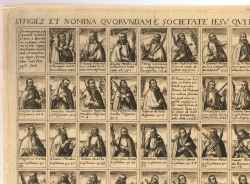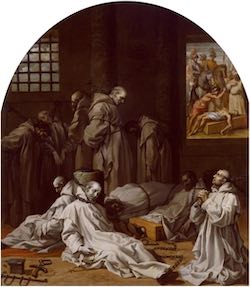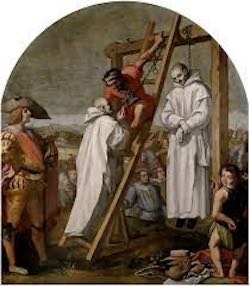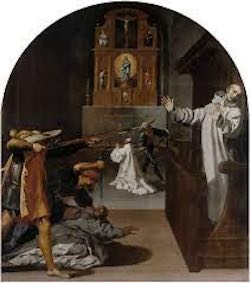Topic: 6. Sacrifices of self: Martyrology after Reformation (16th-18th Century)
During the volatile period between the sixteenth and eighteenth centuries, the concept of martyrdom underwent significant reinterpretations across different Christian denominations. This section explores how Catholics, Protestants, and Anabaptists each uniquely perceived and portrayed martyrdom. Protestants, countering the Catholic notion of sainthood, crafted new martyrologies to establish a lineage of sacrifice rooted in what they deemed as true faith. Similarly, the Anabaptists viewed the state of persecution, as chronicled in their martyrologies, as a testament to being part of the true church. This collection includes a wide array of early modern Catholic, Lutheran, Calvinist, and Anabaptist printed sources and images. It is further enriched by a comprehensive bibliography spanning from the 19th to the 21st Century, offering modern perspectives on these historical interpretations
Lives of the English Martyrs: the Martyrs Declared Venerable
London: Longmans, Green and Co., 1914.
A broadside on Jesuit martyrs; with an engraving divided into 112 compartments with 102 images of the first martyrs from 1549 to 1608, one emblem showing an arm holding two anchors, and with engraved text by Petrus Ribadaneira (1608)
from: Effigies et Nomina Quorundam e Societate Iesu, Cologne, 1608
London, British Museum
Ritualistic Acts and Compulsive Behaviour: the Pattern of Tudor Martyrdom
in: American Historical Review, v. 83 (1978), issue 3: pp.625-643.
Where Were the Quakers Hanged?
in: Procedings of the Bostonian Society, v. (1911), issue : pp.37-49.
Prison and Death of the Ten Members of the London Charterhouse (1632)
Museo Nacional del Prado, Madrid
The Martyrdom of Fathers John Rochester and James Walworth (1626 - 1632)
Museo Nacional del Prado, Madrid
The Martyrdom of Four Monks at the Roermond Charterhouse (1632)
Museo Nacional del Prado, Madrid
The Martyrdom of the Carthusians of Bourg Fontaine (1626 - 1632)
Museo Nacional del Prado, Madrid






